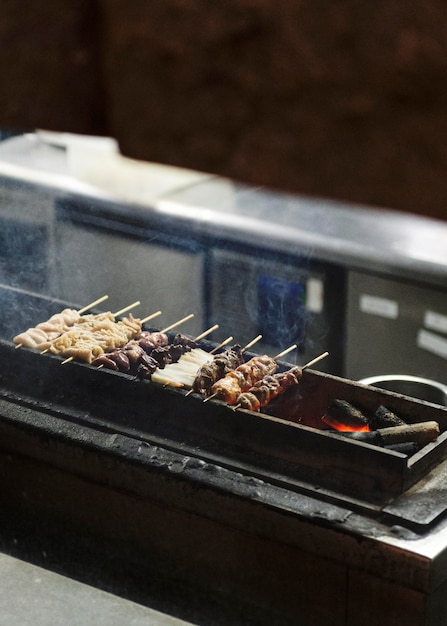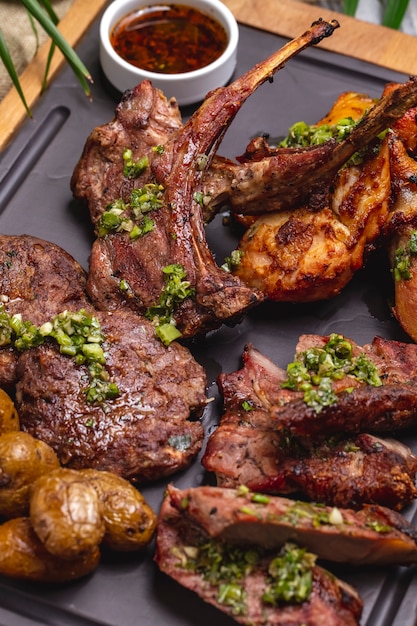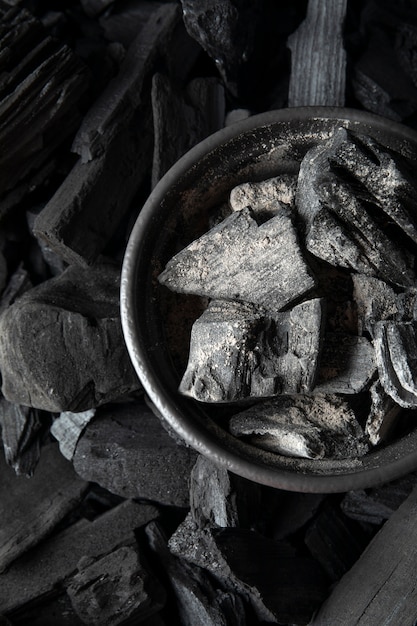Common Mistakes While BBQing Beef and Their Fixes
Barbecuing beef is a popular cooking method in the UK, especially during the summer months when people gather outdoors to enjoy delicious grilled meals. However, even experienced grill masters can make mistakes that can affect the taste and texture of the beef. In this article, we will explore some common BBQ mistakes and offer helpful fixes to ensure your next beef barbecue is a success.
1. Not Preheating the Grill
One of the most common mistakes when barbecuing beef is not preheating the grill properly. Preheating the grill ensures that it reaches the desired cooking temperature and helps to sear the beef properly. Without preheating, the beef may end up being undercooked or lacking that desirable charred exterior.
Fix: Preheat your grill for at least 10-15 minutes before placing the beef on the grates. This will allow the grill to reach the optimal temperature and ensure even cooking.
2. Using the Wrong Cuts of Beef
Choosing the right cuts of beef is crucial for a successful barbecue. Some cuts are better suited for grilling than others, as they tend to be more tender and flavorful. Using the wrong cut can result in tough and chewy meat.
Fix: Opt for cuts like ribeye, sirloin, or skirt steak, which are known for their tenderness and flavor when grilled. If you prefer leaner cuts, consider marinating them beforehand to enhance moisture and tenderness.
3. Overcooking the Beef
Overcooking beef is a common mistake that can lead to dry and tough meat. It’s easy to get caught up in the cooking process and leave the beef on the grill for too long.
Fix: Use a meat thermometer to ensure that the beef reaches the desired internal temperature. For medium-rare, aim for around 135°F (57°C), while medium is around 145°F (63°C). Once the beef reaches the desired temperature, remove it from the grill and let it rest for a few minutes before serving.
4. Not Letting the Beef Rest
Many people make the mistake of slicing into the beef immediately after taking it off the grill. This can cause the juices to run out, resulting in dry meat.
Fix: Allow the beef to rest for about 5-10 minutes before slicing. This allows the juices to redistribute throughout the meat, resulting in a more flavorful and juicy steak.
5. Neglecting to Season Adequately
Seasoning plays a crucial role in enhancing the flavor of grilled beef. However, many people either under-season or forget to season their meat altogether.
Fix: Generously season your beef with salt and pepper or your favorite rub at least 30 minutes before grilling. This will allow the flavors to penetrate the meat and create a tasty crust on the outside.
Tip: Experiment with different seasoning blends and marinades to add variety and complexity to your grilled beef.
By avoiding these common mistakes and following the suggested fixes, you can elevate your barbecue game and impress your friends and family with perfectly grilled beef every time. Remember to embrace the art of grilling, have fun, and enjoy the delicious results!
Fixing Overcooked Beef in BBQ
Barbecuing beef can be a delicious way to enjoy tender and juicy meat. However, sometimes accidents happen and the beef ends up overcooked, resulting in tough and dry meat. But fear not, there are ways to salvage your overcooked beef and still enjoy a flavorful meal. Here are some tips on how to fix overcooked beef in a BBQ:
1. Marinating
Marinating overcooked beef can help add moisture and flavor back into the meat. Create a simple marinade using ingredients like olive oil, garlic, Worcestershire sauce, and herbs. Place the overcooked beef in the marinade for at least an hour, or preferably overnight, to allow the flavors to penetrate the meat.
2. Slicing Thinly
If your beef is too tough to enjoy as a whole piece, consider slicing it thinly. This will make the meat easier to chew and can help mask the overcooked texture. Thin slices of beef can be used in sandwiches, wraps, or salads.
3. Slow Cooking
A slow cooker can work wonders when it comes to fixing overcooked beef. Slow-cooking the beef in a flavorful liquid can help break down the tough fibers and make the meat more tender. Add some vegetables, broth, and spices to the slow cooker, and cook on low heat for several hours until the beef becomes fork-tender.
4. Incorporating Sauces and Gravies
If your overcooked beef lacks moisture, adding sauces or gravies can help revive its juiciness. Pouring a generous amount of sauce or gravy over the beef before reheating can add moisture and flavor to the meat. Consider using barbecue sauce, mushroom gravy, or red wine reduction to enhance the taste.
“Marinating overcooked beef can help add moisture and flavor back into the meat.”
If you’re looking for some inspiration, here’s a recipe idea for fixing overcooked beef:
| Ingredients: | Instructions: |
|---|---|
|
|
With these tips and tricks, you can salvage overcooked beef and turn it into a delicious meal. Don’t let a BBQ mishap ruin your dining experience; get creative and use these methods to revive your overcooked beef!
Preventing Beef from Drying Out During BBQ
Barbecuing beef is a favorite pastime for many in the UK during the summer months. However, one common challenge that grillmasters face is preventing the meat from drying out. Dry beef can be tough and lack flavor, so it’s essential to employ some strategies to ensure juicy and delicious results. Here are some tips and techniques to help you prevent beef from drying out during your next BBQ:
1. Choose the Right Cut of Meat
Not all cuts of beef are created equal when it comes to grilling. Some cuts are naturally more tender and juicy, while others are leaner and prone to drying out. Opt for cuts like ribeye, sirloin, or chuck roast, which have a higher fat content and marbling, as they tend to retain moisture better during cooking.
2. Marinate or Brine the Meat
Marinating or brining the beef before grilling can help to enhance both its flavor and moisture. The acidic components in marinades can help break down tough fibers and make the meat more tender, while adding salt through brining helps retain moisture. Consider using marinades or brines with ingredients such as citrus juices, soy sauce, Worcestershire sauce, olive oil, herbs, and spices.
3. Don’t Overcook the Beef
Overcooking is a common mistake that leads to dry and tough beef. Invest in a meat thermometer to ensure that you cook the beef to the correct internal temperature without going overboard. For medium-rare beef, aim for an internal temperature of approximately 135°F (57°C). Remember that the beef will continue to cook after being removed from the grill, so it’s essential to let it rest for a few minutes before slicing.
4. Use Indirect Heat and Manage Flames
Grilling beef over direct flames can lead to charring and uneven cooking, which increases the risk of drying out the meat. Instead, opt for indirect heat by setting up a two-zone fire on your charcoal or gas grill. This involves placing the coals on one side or turning on only one burner, while grilling the beef on the cooler side. Managing the flames by adjusting the grill’s vents and using a spray bottle filled with water can also help prevent excessive drying.
5. Let the Beef Rest
Once the beef is cooked to perfection, resist the temptation to slice into it immediately. Allowing the meat to rest for about 5-10 minutes after grilling allows the juices to redistribute within the beef, resulting in a juicier final product. Tent the beef with aluminum foil during resting to retain its warmth.
Remember, preventing beef from drying out during BBQ is all about selecting the right cut, marinating or brining, avoiding overcooking, using indirect heat, and allowing the meat to rest. By following these tips, you’ll be able to serve succulent and flavorful beef to impress your friends and family at your next BBQ gathering.
How to Rescue Undercooked BBQ Beef?
There’s nothing worse than spending hours marinating and cooking beef for a BBQ, only to find it’s undercooked when you slice into it. Don’t worry, though! We’ve got some tips and tricks to help you rescue that undercooked beef and still serve a delicious meal to your guests.
1. Identify the Undercooked Beef
Before taking any further steps, make sure the beef is indeed undercooked. Look for a pink or raw center in the meat. If the beef is entirely raw in the middle, it needs more cooking time.
2. Finish Cooking on a Grill
If the beef is just slightly undercooked, you can finish cooking it on a grill. Heat up the grill to medium-high heat and place the beef directly on the grates. Cook for a few minutes on each side until the desired doneness is achieved.
3. Slice and Sauté
If the beef is significantly undercooked, the best option is to slice it into thin strips and sauté them in a hot skillet. This method allows you to quickly cook the beef while adding flavor. Heat some oil or butter in the skillet and toss in the beef slices. Cook for a couple of minutes until the beef reaches the desired level of doneness.
4. Let it Rest
Once the beef is cooked to your liking, remove it from the heat and let it rest for a few minutes. This helps the juices redistribute, resulting in a more tender and flavorful meat.
Pro tip: Use a meat thermometer to ensure proper cooking. For medium-rare beef, aim for an internal temperature of 130-135°F (55-57°C), while medium should be around 140-145°F (60-63°C).
5. Serve with Flavorful Sauces
If the beef is slightly dry after rescuing it, serve it with flavorful sauces to enhance the taste. Consider options like chimichurri, BBQ sauce, or a tangy steak sauce to add moisture and extra flavor.
6. Avoid Future Mishaps
To prevent undercooked beef in the future, ensure your grill is preheated properly before cooking, use a meat thermometer for accurate readings, and allow enough cooking time for thicker cuts of beef. Practice makes perfect, so keep experimenting and refining your grilling skills!
Dealing with Flare-ups while BBQing Beef
When it comes to summer in the UK, nothing beats firing up the barbecue and cooking a mouth-watering beef feast. However, one common issue that can arise while BBQing beef is flare-ups. These flare-ups occur when fat or marinade drips onto the hot coals, causing sudden bursts of flames that can char your meat and ruin your grilling experience. But fear not! With a few simple tips and tricks, you can effectively deal with flare-ups and ensure your beef is cooked to perfection.
1. Create Zones
One way to prevent flare-ups is to create different heat zones on your grill. This can be done by piling the coals on one side of the grill, leaving the other side empty. By varying the heat levels, you can quickly move your beef away from any flare-ups and continue cooking it indirectly, reducing the risk of charring.
2. Trim Excess Fat
Trimming excess fat from your beef cuts before grilling can also help reduce flare-ups. Fat dripping onto the coals is a major cause of flare-ups, so by removing it beforehand, you can minimize the likelihood of flames engulfing your meat. However, it’s essential to leave a thin layer of fat for added flavor and juiciness.
3. Use a Drip Pan
Placing a drip pan underneath your beef while it cooks is another effective technique for managing flare-ups. The pan will catch any drippings, preventing them from reaching the coals and causing flames. Make sure to line the pan with foil for easy cleaning afterward.
4. Practice Patience
**Patience** is key when dealing with flare-ups. Instead of panicking and flipping your beef repeatedly, allow the flames to die down naturally. Flipping too often can aggravate the situation and lead to further flare-ups.
Remember, it’s important to prioritize safety when cooking on a grill. If flare-ups become uncontrollable, always have a spray bottle of water nearby to extinguish the flames while avoiding the risk of flare-ups.
“By creating heat zones, trimming excess fat, using a drip pan, and practicing patience, you’ll be well-equipped to handle flare-ups while BBQing beef.”
Ensuring Even Cooking of Beef on BBQ
Barbecuing beef can be a delicious way to enjoy a summer meal, but it can also be challenging to ensure that the meat is evenly cooked. Whether you prefer a rare or well-done steak, achieving an even cook throughout is essential for both taste and food safety. Here are some tips to help you achieve perfectly cooked beef every time on your barbecue.
1. Choose the Right Cut
The choice of meat can greatly impact how evenly it cooks on the barbecue. Opt for cuts that are of even thickness to promote consistent cooking. Thicker cuts like ribeye or sirloin tend to be more forgiving than thinner steaks like flank or skirt.
2. Preheat the Grill
Preheating your grill is crucial for even cooking. Make sure to heat your barbecue to the desired temperature before placing the beef on the grates. This ensures that the meat sears quickly, forming a crust, and preventing it from sticking to the grill.
3. Use the Two-Zone Method
For larger cuts of beef or when cooking multiple steaks, utilize the two-zone method. This involves creating two heat zones on your grill—one side with direct high heat for searing, and the other with indirect heat for slower cooking. Start by searing the beef over high heat to lock in the juices, then move it to the indirect heat zone to finish cooking.
4. Monitor Internal Temperature
Monitoring the internal temperature of the beef is crucial in achieving the desired level of doneness. Invest in a good instant-read thermometer to accurately measure the internal temperature of the meat. Follow a meat temperature guide to determine the ideal temperature for your preferred doneness, whether it’s rare, medium-rare, medium, or well-done.
5. Rest the Meat
Allow the beef to rest for a few minutes after taking it off the barbecue. Resting the meat allows the juices to redistribute, resulting in a more succulent and evenly cooked steak. Cover the beef loosely with foil during resting to keep it warm.
“To achieve perfectly cooked beef on the barbecue, choosing the right cut, preheating the grill, using the two-zone method, monitoring the internal temperature, and resting the meat are essential steps.” – BBQ enthusiast



